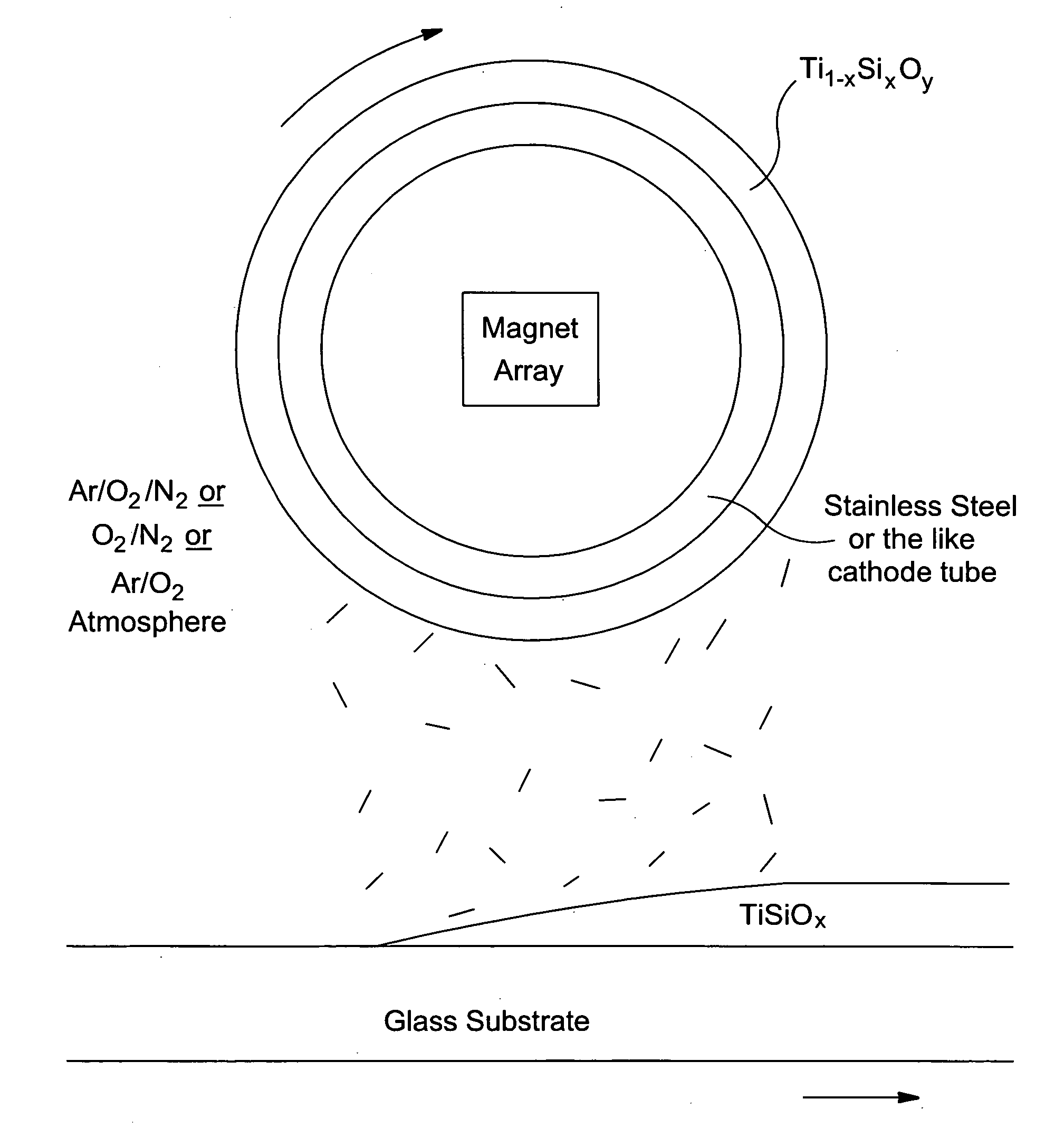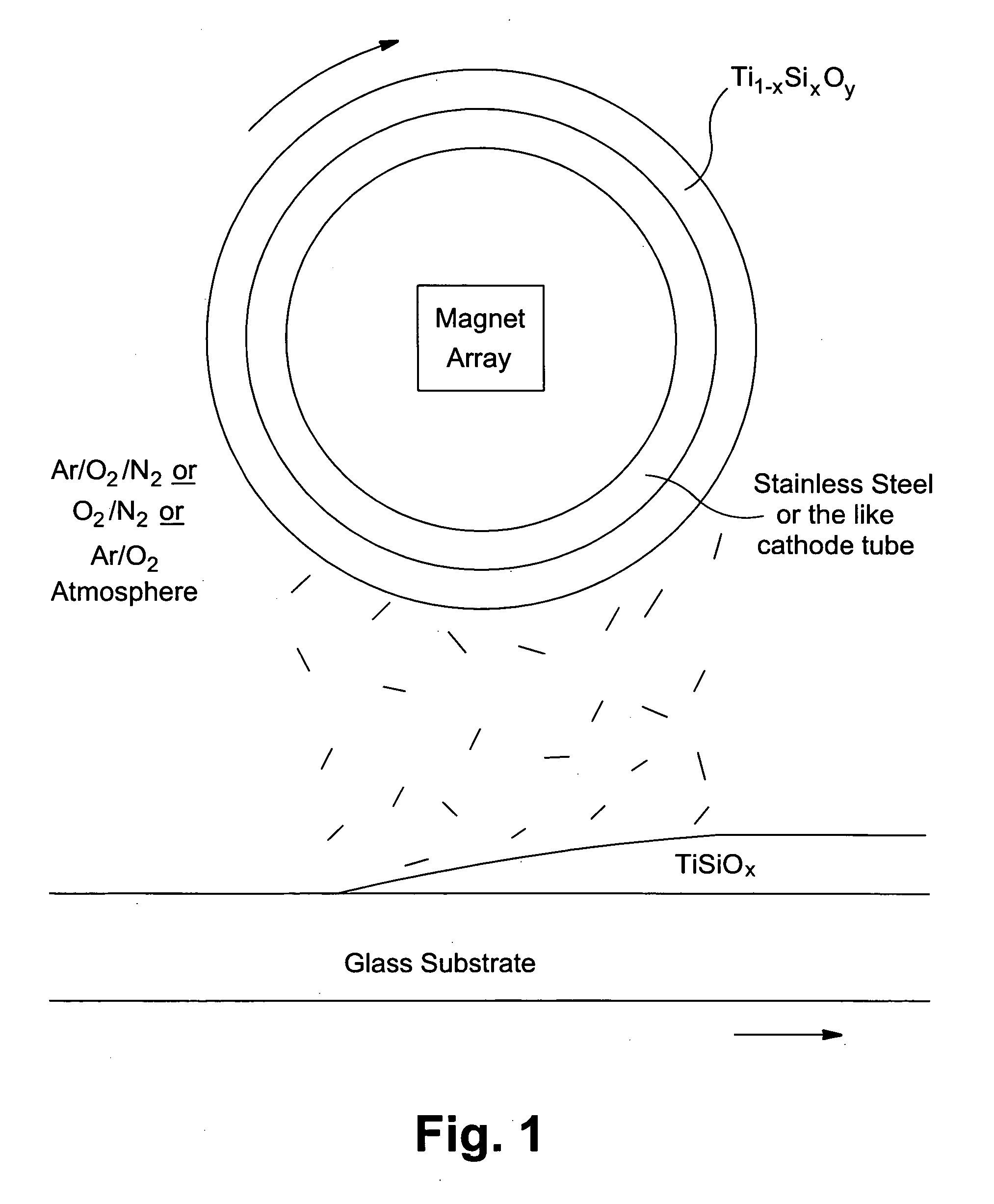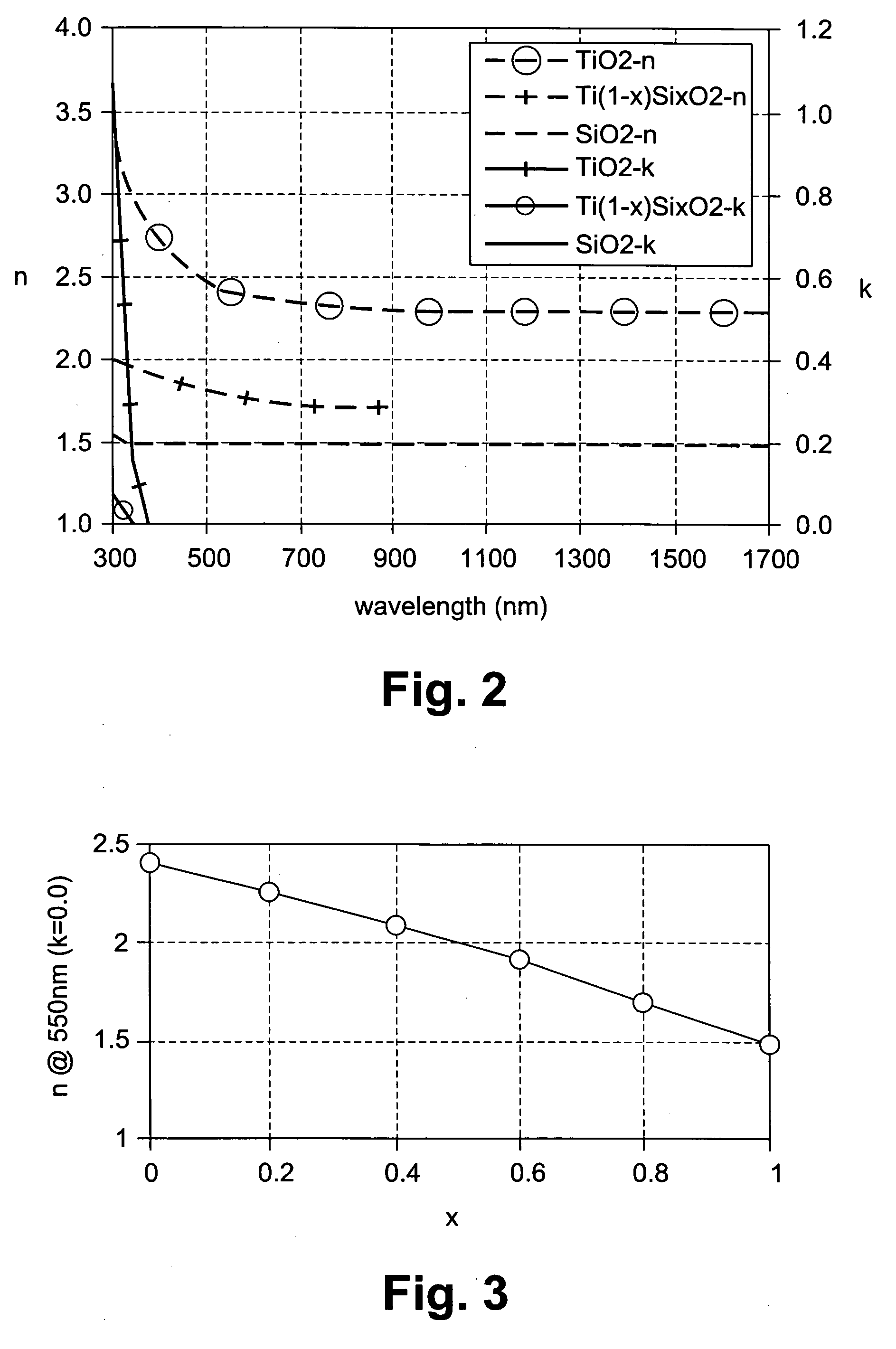Sputtering target including titanium silicon oxide and method of making coated article using the same
a technology of titanium silicon oxide and coating material, which is applied in the direction of vacuum evaporation coating, coating, electrolysis components, etc., can solve the problems of low deposition rate of metallic alloy metal targets in reactive sputtering, limited use of alloy metals as metal sputtering targets, and difficulty in mixing gas when sputtering metal or si targets, etc., to achieve the effect of lower index of refraction (n) value and higher index of refraction (n valu
- Summary
- Abstract
- Description
- Claims
- Application Information
AI Technical Summary
Benefits of technology
Problems solved by technology
Method used
Image
Examples
Embodiment Construction
[0011] Certain example embodiments of this invention relate to a sputtering target of or including Ti1-xSixOy and / or a method of making a coated article using such a sputtering target. In certain example embodiments, the target may be a rotatable magnetron sputtering target, a stationary planar target, or the like. In certain example embodiments, the Ti1-xSixOy may be substoichiometric with respect to oxygen. In certain example embodiments of this invention, the target may be of or include Ti1-xSixOy where x is from about 0.05 to 0.95 (more preferably from about 0.1 to 0.9, and even more preferably from about 0.2 to 0.8, and possibly from about 0.5 to 0.8) and y is from about 0.2 to 1.95 (more preferably from about 0.2 to 1.95, and even more preferably from about 0.2 to 1.90, and possibly from about 1.0 to 1.85). The sputtering target may be sputtered in an atmosphere of or including one or more of Ar, O2 and / or N2 gas(es) in certain example embodiments of this invention. Other mate...
PUM
| Property | Measurement | Unit |
|---|---|---|
| thick | aaaaa | aaaaa |
| thickness | aaaaa | aaaaa |
| thickness | aaaaa | aaaaa |
Abstract
Description
Claims
Application Information
 Login to View More
Login to View More - R&D
- Intellectual Property
- Life Sciences
- Materials
- Tech Scout
- Unparalleled Data Quality
- Higher Quality Content
- 60% Fewer Hallucinations
Browse by: Latest US Patents, China's latest patents, Technical Efficacy Thesaurus, Application Domain, Technology Topic, Popular Technical Reports.
© 2025 PatSnap. All rights reserved.Legal|Privacy policy|Modern Slavery Act Transparency Statement|Sitemap|About US| Contact US: help@patsnap.com



